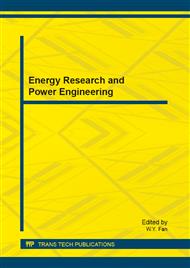[1]
Akyildiz, I., Su, W., Sankarasubramaniam, Y., & Cayirci, E. (2002). Wireless sensor networks: a survey. Computer Networks, 39(4), 393–422.
DOI: 10.1016/s1389-1286(01)00302-4
Google Scholar
[2]
G.J. Pottie and W.J. Kaiser, Wireless Integrated Network Sensors, Comm. ACM, vol. 43, no. 5, pp.51-58, May (2000).
Google Scholar
[3]
N.B. Priyantha, A. Chakraborty, and H. Balakrishnan, The Cricket Location-Support System, " Proc. ACM MobiCom , 00, pp.32-43, Aug. (2000).
Google Scholar
[4]
A. Savvides, C. -C. Han, and M.B. Strivastava, Dynamic Fine- Grained Localization in Ad-Hoc Networks of Sensors, " Proc. ACM MobiCom , 01, pp.166-179, July (2001).
DOI: 10.1145/381677.381693
Google Scholar
[5]
J. Hightower and G. Borriello, Location Systems for Ubiquitous Computing, Computer, vol. 34, no. 8, pp.57-66, Aug. (2001).
DOI: 10.1109/2.940014
Google Scholar
[6]
N. Bulusu, J. Heidemann and D. Estrin, GPS-less Low Cost Outdoor Localization for Very Small Devices, IEEE Personal Communications, vol. 7, no. 5, pp.28-34, (2000).
DOI: 10.1109/98.878533
Google Scholar
[7]
T. He, C. D. Huang, M. B. Brian, A. S. John and A. Tarek, Range-free Localization Schemes for Large Scale Sensor Networks, in Proceedings of the 9th annual international conference on Mobile Computing and Networking, San Diego, CA, USA, September (2003).
DOI: 10.1145/938985.938995
Google Scholar
[8]
D. Niculescu and B. Nath, Ad hoc Positioning System (APS), in Proceedings of 2001 IEEE Global Telecommunications Conference, Texas, USA, November (2001).
DOI: 10.1109/glocom.2001.965964
Google Scholar
[9]
M. Y. Liu, W. B. Li and X. Pei, Convex Optimization Algorithms for Cooperative Localization Vehicles, Acta Automatica Sinica, vol. 36, no. 5, pp.704-710, (2010).
DOI: 10.3724/sp.j.1004.2010.00704
Google Scholar
[10]
Q. Zhou, H. S. Zhu and Y. J. Xu, Smallest Enclosing Circle based Localization Approach for Wireless Sensor Networks, Journal on Communications, vol. 29, no. 11, pp.84-90, (2008).
DOI: 10.1109/cmc.2009.341
Google Scholar
[11]
Sheu, P.C. Chen and C.S. Hsu, A Distributed Localization Scheme for Wireless Sensor Networks with Improved Grid-Scan and Vector-Based Refinement, IEEE Transactions on Mobile Computing, vol. 7, no. 9, pp.1110-1123, (2008).
DOI: 10.1109/tmc.2008.35
Google Scholar
[12]
S. Yi, W. Ruml and Y. Zhang, Localization from Mere Connectivity in Sensor Networks, " In Proceedings of the 4th ACM Int, l Symp on Mobile Ad Hoc networking & computing, New York, USA, June (2003).
DOI: 10.1145/778415.778439
Google Scholar


